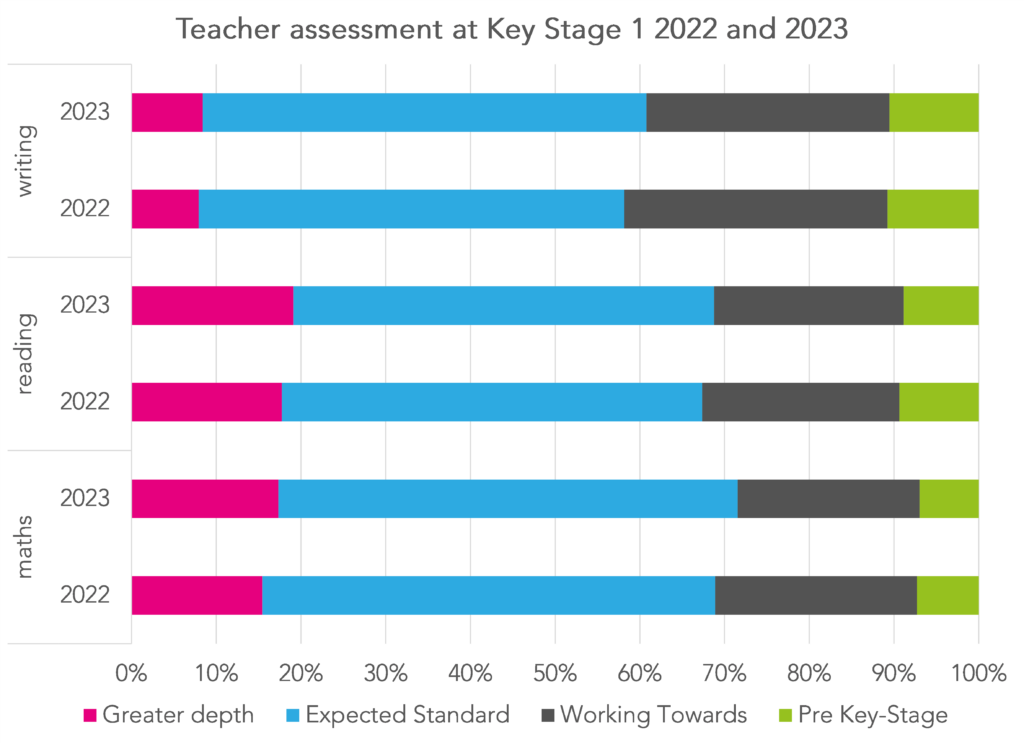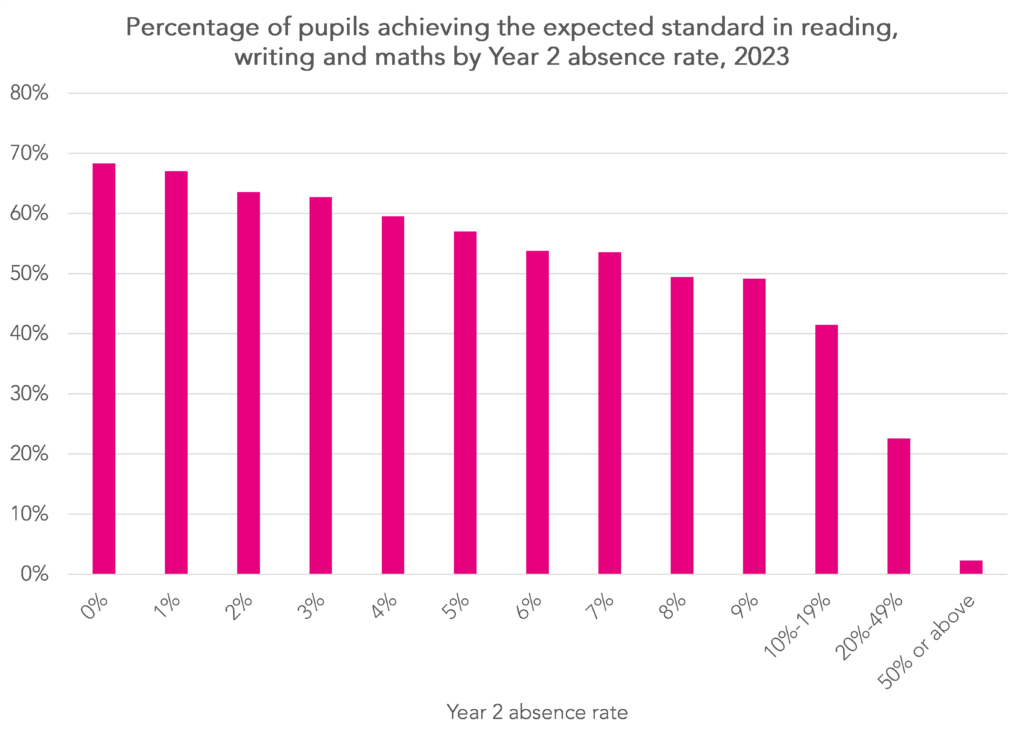This blogpost is based on data collected via our 2023 Early Results Service for primary schools. By uploading their EYFS, Phonics, KS1 and KS2 assessments, Aspire schools can access an early 2023 national analysis of their results before the end of term. There’s still time to take part – the next submission window for KS1 closes on Friday 7 July!
Data
Over 1,400 primary schools kindly shared their 2023 Key Stage 1 data, including teacher assessments and test scaled scores, with us. Of those, over 1,000 previously shared their data with us last year.
We have also been collecting absence data from schools since the start of the pandemic. The 1,400 schools also supplied us with absence data for the 2023 academic year.
Teacher assessments
Let’s first take a look at teacher assessments in reading, writing and maths.
We use data from the 1,017 schools for which we have data for both 2022 and 2023. Attainment at these schools was very close to the national average in 2022.
Pupils working at the standard of the national curriculum assessments are assessed on a three point scale (greater depth, expected standard, working towards). Pupils working below these standards are assessed using pre-key stage standards or the engagement model if not pursuing subject-specific study. Further details can be found here.
Across all subjects, there was a small increase in the percentage of pupils achieving the expected standard.
Among the 1,017 schools for which we have data for 2022 and 2023:
- 72% of pupils achieved the expected standard in maths in 2023 (up from 69% in 2022)
- 69% of pupils achieved the expected standard in reading in 2023 (up from 67% in 2022)
- 61% of pupils achieved the expected standard in writing in 2023 (up from 58% in 2022)
- 56% of pupils achieved the expected standard in all three subjects in 2023 (up from 54% in 2022)
Comparison to pre-pandemic standards
Of the schools that supplied data in 2023, 620 had done so in 2019. This was the final year of national data collection prior to the start of the pandemic.
Attainment in all subjects is still some way behind pre-pandemic standards, especially in writing.
Among the 620 schools for which we have data for 2019 and 2023:
- 71% of pupils achieved the expected standard in maths in 2023 (down from 76% in 2019)
- 69% of pupils achieved the expected standard in reading in 2023 (down from 75% in 2019)
- 61% of pupils achieved the expected standard in writing in 2023 (down from 69% in 2019)
- 56% of pupils achieved the expected standard in all three subjects in 2023 (down from 65% in 2019)
The disadvantage gap
Among the schools for which we received data in 2022 and 2023 there was a very slight increase in the disadvantage gap measured by the percentage of pupils achieving the expected standard in all three of reading, writing and maths.
- 41% of disadvantaged pupils achieved the expected standard in all three subjects in 2023 (up from 38% in 2022)
- 62% of pupils achieved the expected standard in all three subjects in 2023 (up from 59% in 2022)
The relationship between absence and attainment
On average, pupils in Year 2 were absent for 5.7% of session up to the end of May 2023. This compares a national average of 4.0% in 2018/19. 17% missed at least 10% of sessions and 3% missed at least 20%.
The chart below shows the relationship between absence and the percentage of pupils achieving the expected standard in all three of reading, writing and maths.
The chart shows an association between absence and attainment. This isn’t necessarily causal – underlying factors may contribute to both absence and attainment.
30% of disadvantaged Year 2 pupils missed at least 10% of sessions in 2023 compared to 13% of their peers.
However, comparing disadvantaged and non-disadvantaged pupils with similar levels of Year 2 absence shows that the latter group remain more likely to achieve the expected standard in all three subjects.
Summing up
Pupils in Year 2 this year had their pre-school and Reception year disrupted by Covid.
Attainment appears to have improved in 2023. However, it still remains below pre-pandemic standards.
And there hasn’t been much change in the gap between disadvantaged and non-disadvantaged pupils in the percentage achieving the expected standard in reading, writing and maths.
Want to stay up-to-date with the latest research from FFT Education Datalab? Sign up to Datalab’s mailing list to get notifications about new blogposts, or to receive the team’s half-termly newsletter.











Leave A Comment